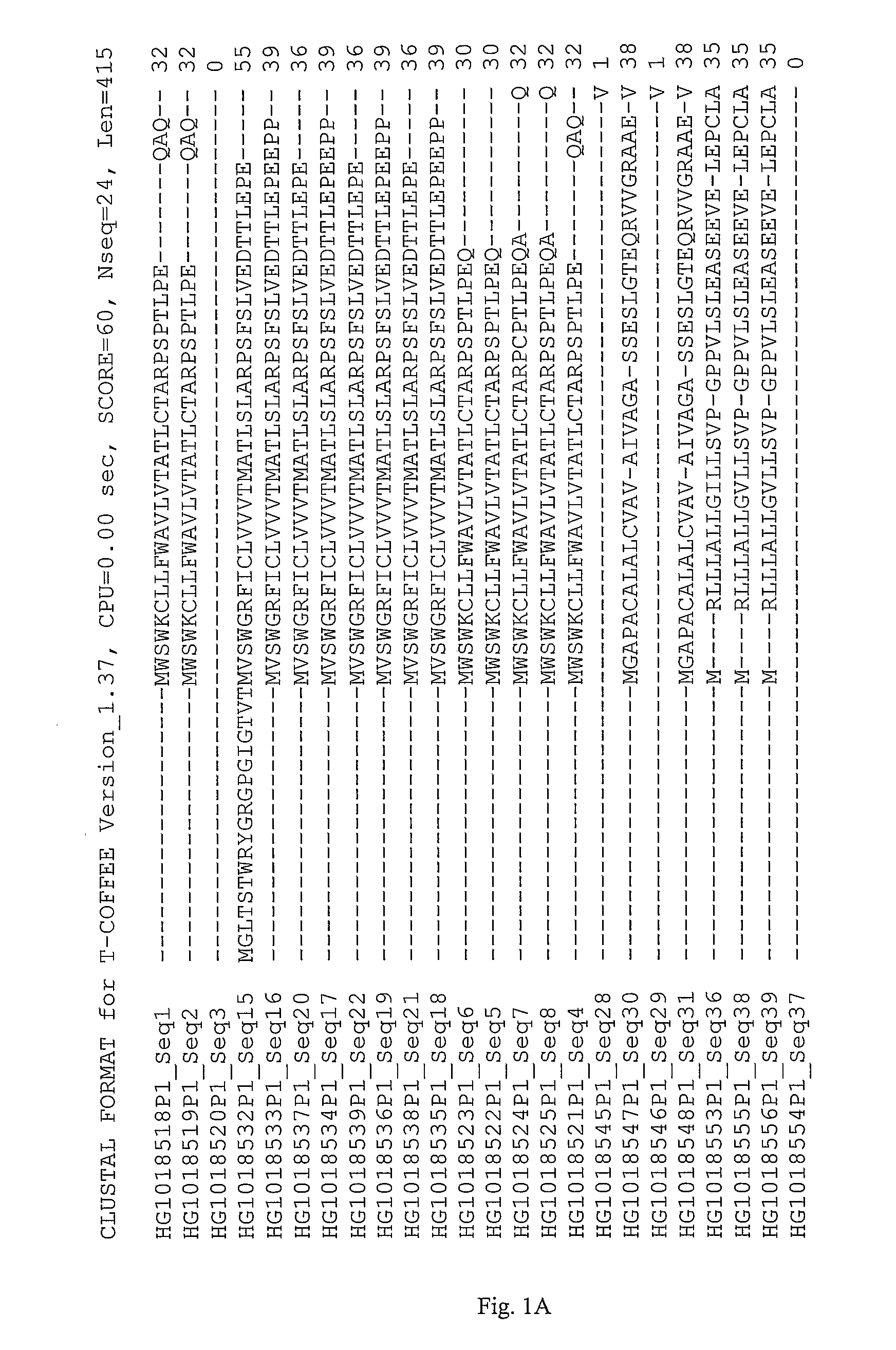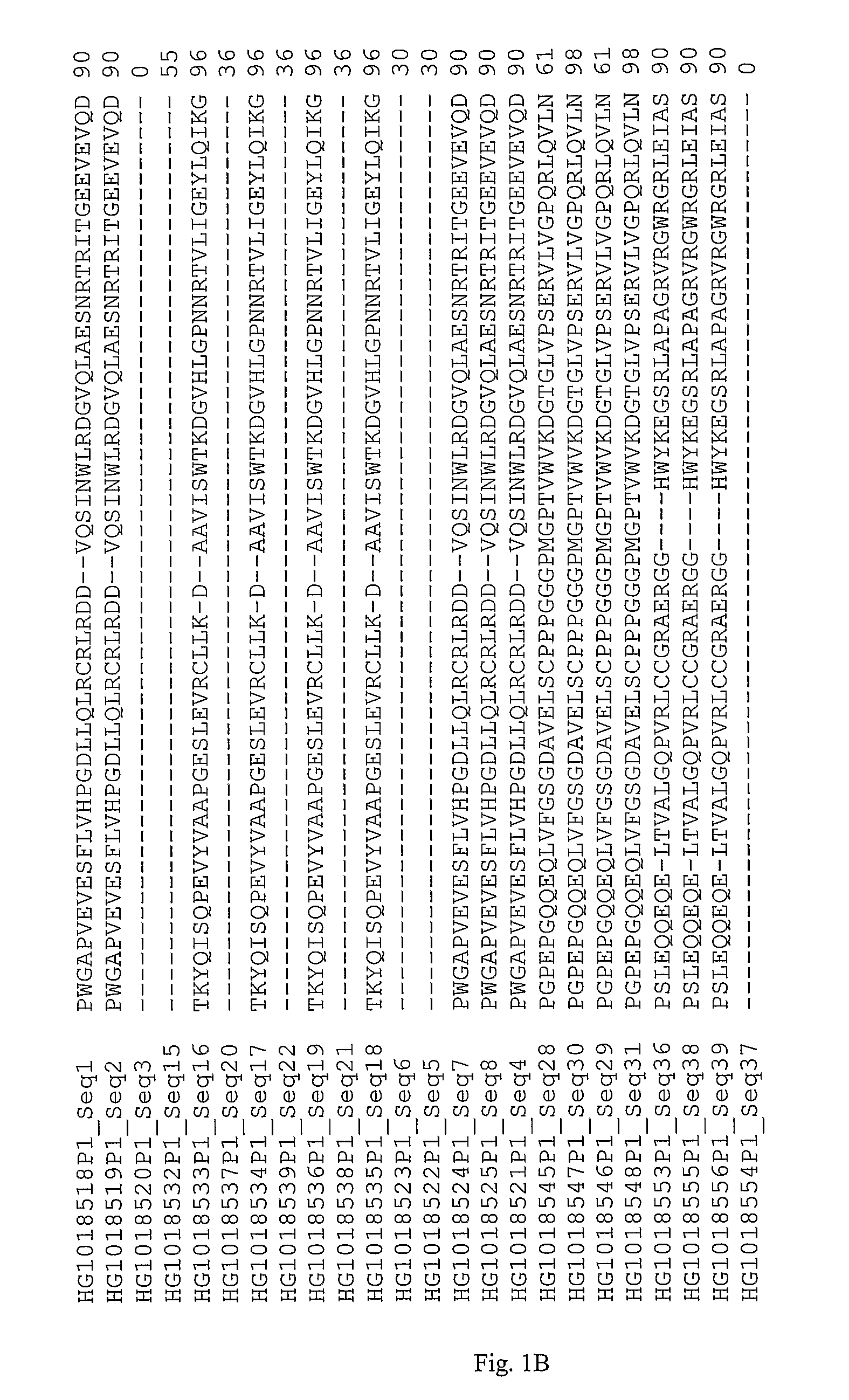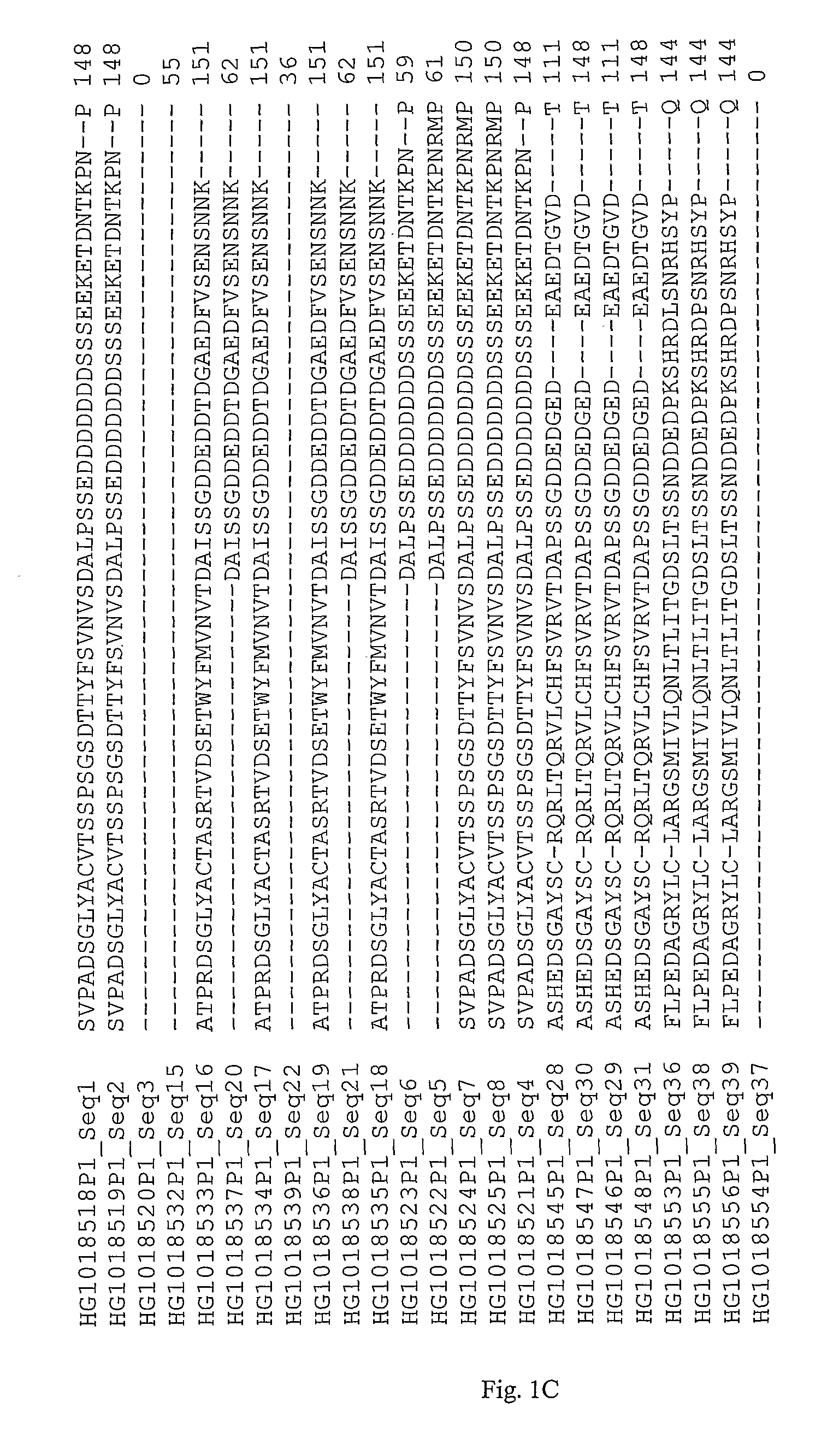Fibroblast Growth Factor Receptors 1,2,3, and 4 as Targets for Therapeutic Intervention
a technology of fibroblast growth factor and receptor, which is applied in the direction of antibody medical ingredients, instruments, peptides, etc., can solve the problems of not fully understanding the role of fgfrs in disease and not fully understanding the role they play
- Summary
- Abstract
- Description
- Claims
- Application Information
AI Technical Summary
Benefits of technology
Problems solved by technology
Method used
Image
Examples
example 1
Assay for FGFR Antibody Function
[0140] A cell line that does not express FGFR, e.g., L6 cells, will be individually stably transfected with each of the different FGFR constructs shown herein. FGFR antibodies will be tested for agonist or antagonist activity in proliferation assays, or another suitable assays, e.g., phospho-ERK or phospho-AKT assays, as described by Beer et al., J Biol Clem. 275(21):16091 (2000). To test for antagonist antibodies, cells expressing an FGFR will be pre-treated with the putative blocking antibody before stimulating the cells with FGF. FGF1 (acidic FGF) and / or FGF2 (basic FGF) will be used to activate most or all FGFRs. In other assays, more selective FGFs will be used as appropriate, i.e., FGF7 (KGF) for the FGFR2 IIIb. Control experiments will be performed as above using pre-immune serum instead of the putative blocking antibodies. To test for agonist antibodies, cells will be stimulated with the putative agonist antibodies, and proliferation, phospho...
example 2
Detection of FGFR1-4 Gene Products by PCR
[0142] The subject polynucleotide compositions can be used as probes and primers in hybridization applications, e.g., polymerase chain reaction (PCR); the identification of expression patterns in biological specimens; the preparation of cell or animal models for function of the subject polypeptide; the preparation of in vitro models for function of the subject polypeptide; etc.
[0143] Human genomic polynucleotide sequences corresponding to the cDNA polynucleotide sequences of the present invention as among sequences comprising the genes of or encoding any of SEQ ID NOs. 1-80 or variants thereof, may be identified by any conventional means, such as, for example, by probing a genomic DNA library with all or a portion of the present polynucleotide sequences.
[0144] Small DNA fragments are useful as primers for PCR, hybridization screening probes, etc. Larger DNA fragments, i.e., greater than 100 nt are useful for production of the encoded polyp...
example 3
Expression of FGFR in Human Tumors by Probing a GeneLogic Library Chip
[0153] The present inventors also interrogated a proprietary oncology database from GeneLogic, using Affymetrix U133 clip probe IDs that corresponded to certain of the sequences studied herein to determine the expression of the sequences in normal tissues and in cancer tissues.
[0154] Interrogation of the GeneLogic database showed overexpression of the FGFR3 gene in malignant bladder, ovary, breast, and endometrium, as compared to expression in the corresponding normal tissues. Furthermore, the database also showed high expression of FGFR3 in normal kidney, liver, lung, pancreas, and bladder. FGFR3, thus, is a strong target for production of therapeutic antibodies for treatment of tumors in which this gene is overexpressed or highly expressed, while minimizing the negative effects on the kidneys, liver, lung, pancreas, and bladder, where the gene is highly expressed and likely able to tolerate reductions to FGFR3...
PUM
| Property | Measurement | Unit |
|---|---|---|
| Cell proliferation rate | aaaaa | aaaaa |
| Cytotoxicity | aaaaa | aaaaa |
| Refractory | aaaaa | aaaaa |
Abstract
Description
Claims
Application Information
 Login to View More
Login to View More - R&D
- Intellectual Property
- Life Sciences
- Materials
- Tech Scout
- Unparalleled Data Quality
- Higher Quality Content
- 60% Fewer Hallucinations
Browse by: Latest US Patents, China's latest patents, Technical Efficacy Thesaurus, Application Domain, Technology Topic, Popular Technical Reports.
© 2025 PatSnap. All rights reserved.Legal|Privacy policy|Modern Slavery Act Transparency Statement|Sitemap|About US| Contact US: help@patsnap.com



